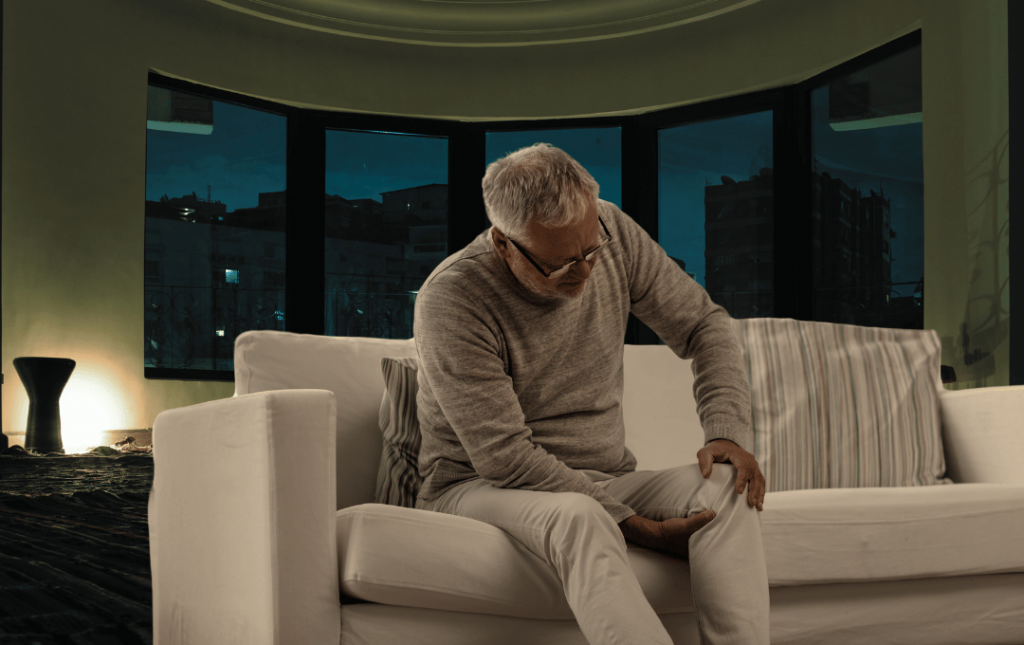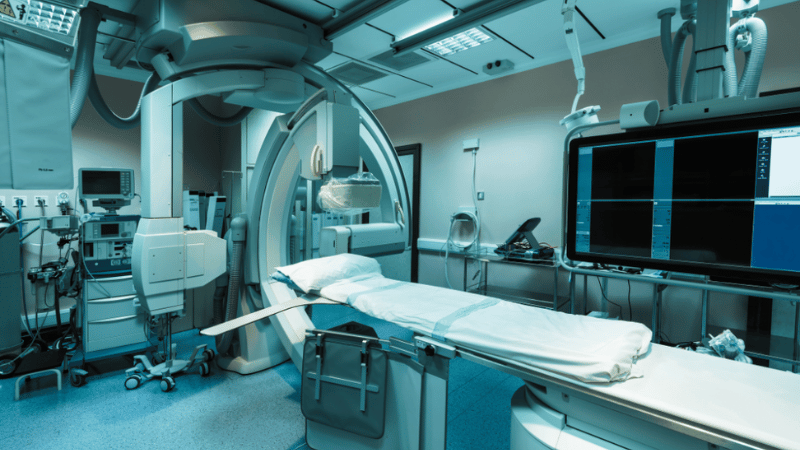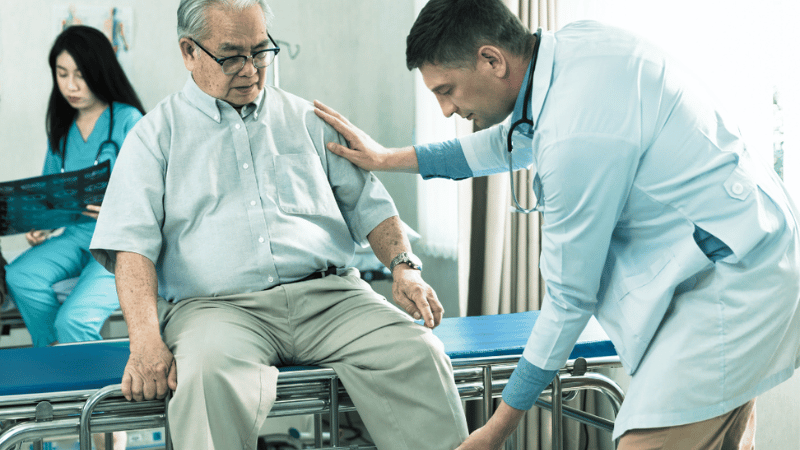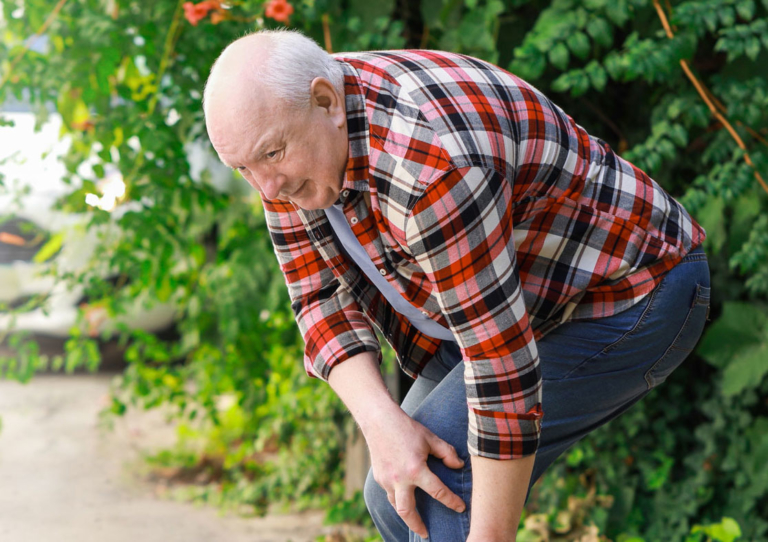People can experience leg pain at night for various health reasons, but did you know it could be a sign of a serious vascular condition like peripheral artery disease (PAD)? Understanding the cause of aching legs when lying down or throbbing leg pain at night can help you take action to protect your vascular health.
Learn why your legs ache at night, how PAD-related leg pain can be identified, and the steps you can take to relieve symptoms and prevent complications.
Learn More About Our PAD Screening Options at USA Vascular Centers.
Could Your Nighttime Leg Pain Be Peripheral Artery Disease?
PAD is a vascular disease caused by plaque buildup in the arteries. When plaque builds up, it restricts blood flow and circulation. This can cause chronic pain, cramps, and numbness in the legs. Symptoms of PAD, such as leg pain, can be mistakenly attributed to old age, which is why PAD can go undetected.
What Does Leg Pain From Peripheral Artery Disease Feel Like?
Leg pain is more than just a sign of aging. Patients with PAD can experience different kinds of leg pain at night, including sensations such as:
- Leg cramps during physical activities like walking
- Throbbing leg pain at night in the lower legs or feet
- Discomfort that worsens when elevating your legs, such as when lying in bed
- Pain in the legs or feet that disturbs sleep
If you are experiencing leg pain and other symptoms of PAD, such as leg discoloration, hair loss in the legs, shiny legs, and difficulty with mobility, see a vascular specialist for a personalized treatment plan for PAD. A person may be at an increased risk for PAD if they are over the age of 50, are smokers, are diabetic, or have high blood pressure or high cholesterol. Take our risk assessment test if you are unsure of your risk.
Why Peripheral Artery Disease Causes Leg Pain at Night
Peripheral artery leg pain at night occurs when plaque buildup has narrowed your arteries (atherosclerosis) to the point that blood has difficulty reaching the muscles in your legs and feet. As atherosclerosis progressively worsens over time, the blood supply becomes severely limited to the point that you experience aching legs even while resting, which is called ischemic rest pain. This condition can cause your legs to ache overnight, keeping you from getting enough sleep.
When lying down, your legs are elevated, so gravity no longer assists blood flow to your feet. This change in positioning can further restrict the delivery of blood, oxygen, and nutrients, contributing to mild to severe discomfort in the lower extremities. Additionally, blood flow naturally decreases during rest periods, making leg pain more noticeable when lying down than standing.
Other Causes of Aching Legs at Night
While peripheral artery leg pain at night is common, it’s not the only cause of chronic discomfort. Some other conditions include:
Nerve-Related Issues
Sciatica and peripheral neuropathy can cause sharp pain, tingling, and discomfort. Symptoms can worsen when you go to bed, causing aching legs when lying down.
Restless Legs Syndrome (RLS)
Restless legs syndrome (RLS) is a neurological condition that causes a strong urge to move your legs and causes uncomfortable sensations like numbness, itching, and aching. Symptoms tend to worsen at night and can impact sleep.
How to Relieve Severe Leg Pain at Night
Lifestyle modifications that help improve high blood pressure or high cholesterol levels may also help reduce leg pain at night caused by peripheral artery disease (PAD). Minimally invasive treatments for PAD are an effective way to improve blood flow and alleviate severe leg pain at night.
If you’re experiencing leg pain at night, schedule a consultation at USA Vascular Centers today for a personalized treatment plan.
Diagnosis and Treatment for Leg Pain
Angiogram machine – Click on the photo to learn more about angiograms.
A vascular specialist will use a combination of physical examinations, specialized testing, and medical imaging to determine whether the pain in your legs results from peripheral artery disease (PAD).
Vascular Screenings for PAD
- Ankle-brachial index test: This test compares the blood pressure in your arm and ankle to assess whether PAD is restricting blood flow to your legs and causing leg pain at night.
- Ultrasound: Sound waves create pictures of arteries and detect blood flow and blockages.
- Angiography: A thin tube (catheter) injects a special dye into your blood vessels. This dye shows up on X-rays, helping doctors find blockages.
- Blood tests: Helps determine PAD risk factors, such as high cholesterol or diabetes.
Treatment for PAD Leg Pain at Night
- Angioplasty: A tiny balloon is inserted into the blocked artery and inflated to flatten the blockage against the artery wall.
- Stent placement: After the artery is opened with a balloon, a mesh tube (stent) is inserted to keep it open.
- Atherectomy: A special catheter with a blade or laser is used to safely remove plaque buildup from the artery wall.
If you have questions regarding treatment for PAD, speak with USA Vascular Centers’ highly skilled vascular specialists.
Treat Leg Pain at Night with USA Vascular Centers
If PAD is causing aching legs when lying down, our vascular specialists can help. Schedule an initial consultation using our online scheduling tool or call us at 888.773.2193. We accept most insurance plans at our nationwide outpatient centers, including Medicare and some Medicaid plans.
Don’t wait; get help now to avoid serious complications like heart attack, stroke, or amputation. Find a USA Vascular Centers outpatient office near you.
FAQs
How do I know if my leg pain at night is due to poor circulation?
Leg pain that improves after dangling your feet off the bed or standing can be PAD. Gravity helps blood flow to the feet and legs when the legs are lowered, temporarily relieving the pain caused by poor circulation.
Can PAD cause leg pain during the day as well?
Yes, the second stage of PAD is claudication, which causes pain during physical activity. When PAD progresses, it leads to ischemic rest pain, which is severe discomfort when you’re resting.
Is leg pain at night always a sign of PAD?
Nerve issues, restless leg syndrome, and muscle cramps can cause aching legs when lying down. If you’re experiencing severe or persistent leg pain while sleeping in addition to other symptoms of PAD, consult a vascular specialist for a diagnosis.
When should I be concerned about leg pain at night?
Experiencing restless sleep due to leg pain may indicate a medical issue needing treatment. You should schedule an evaluation if the pain is severe, persistent, or paired with other symptoms.





